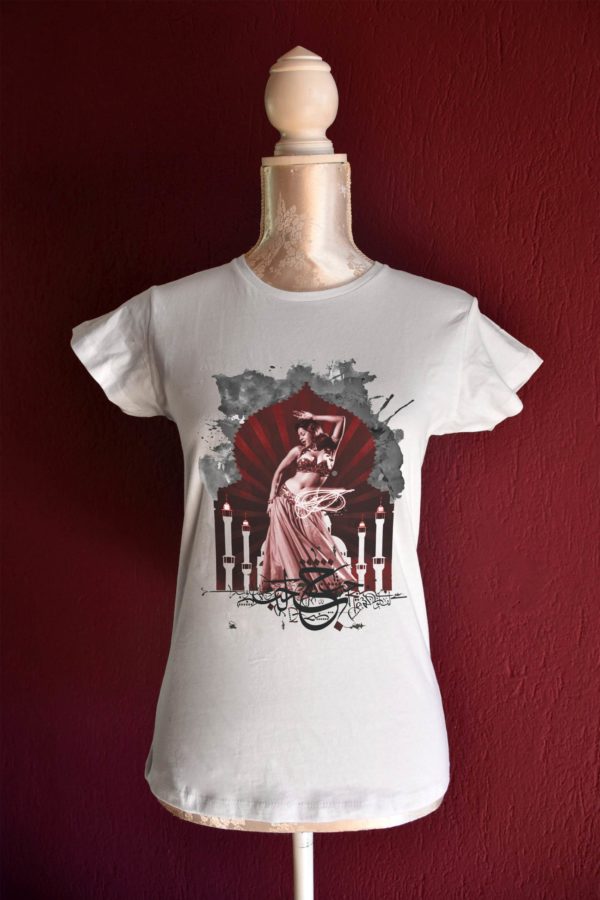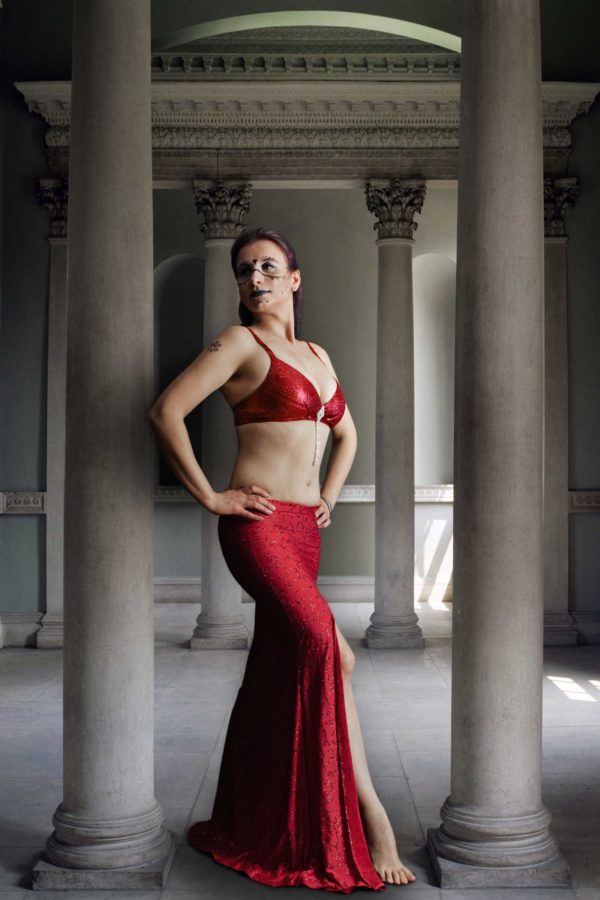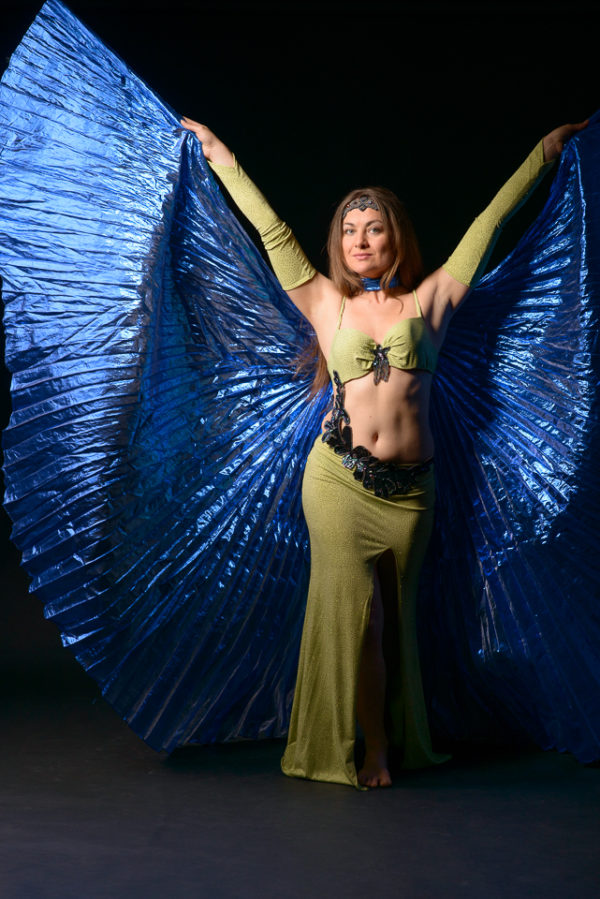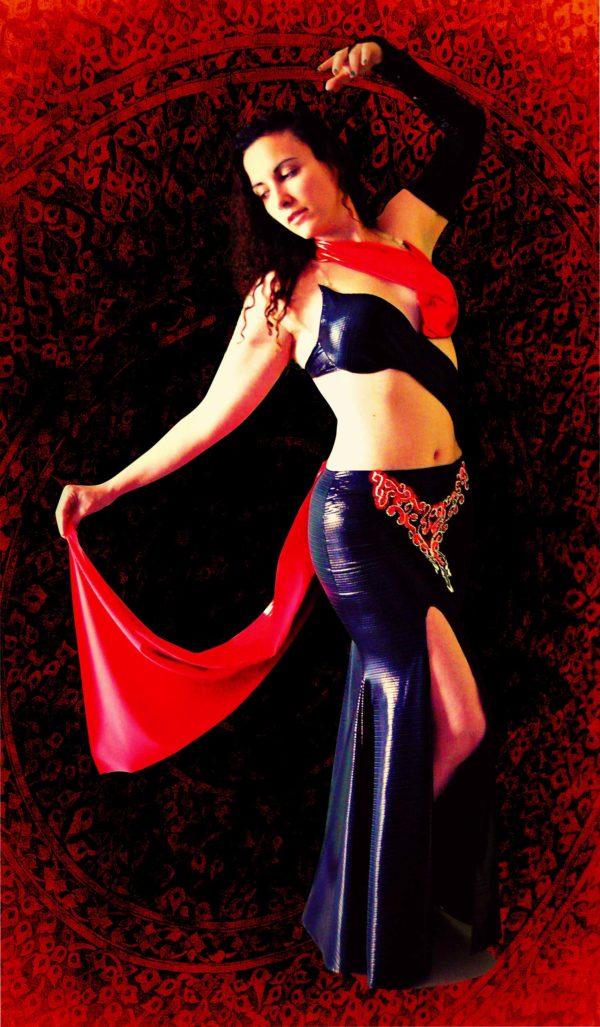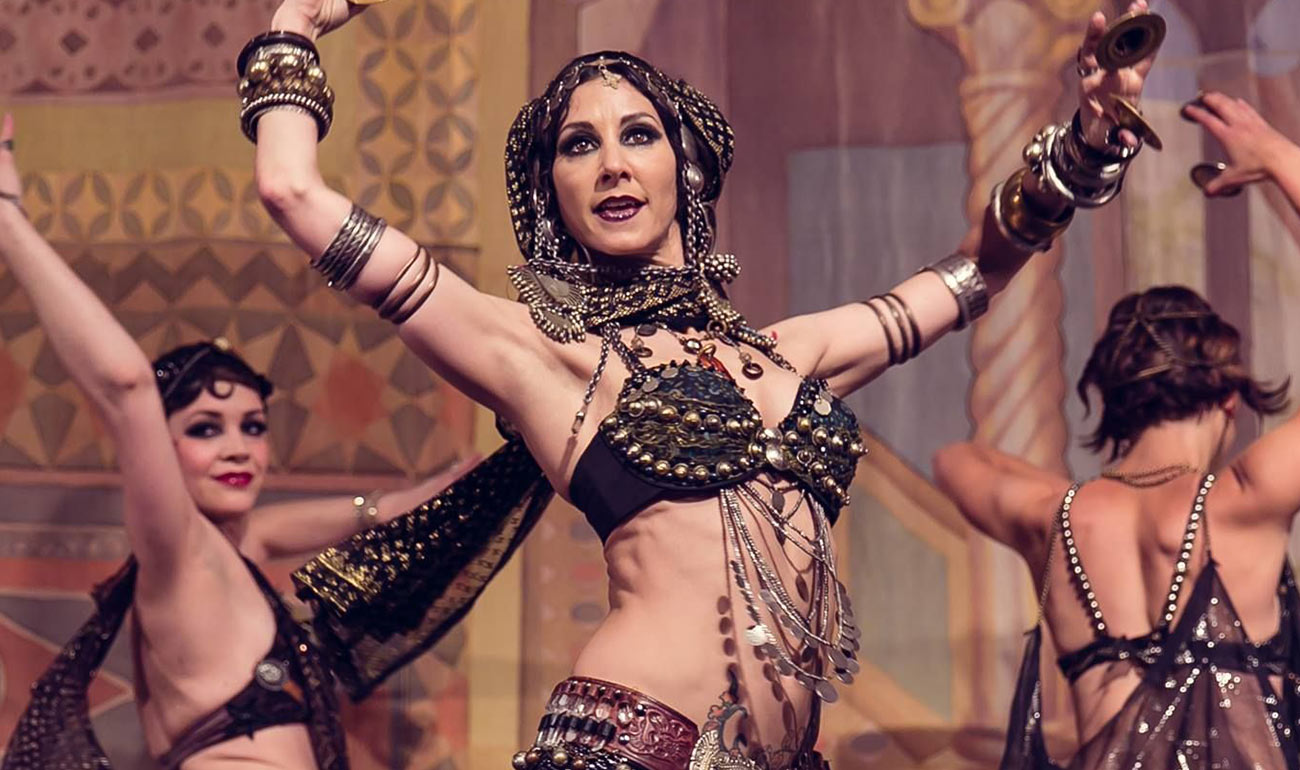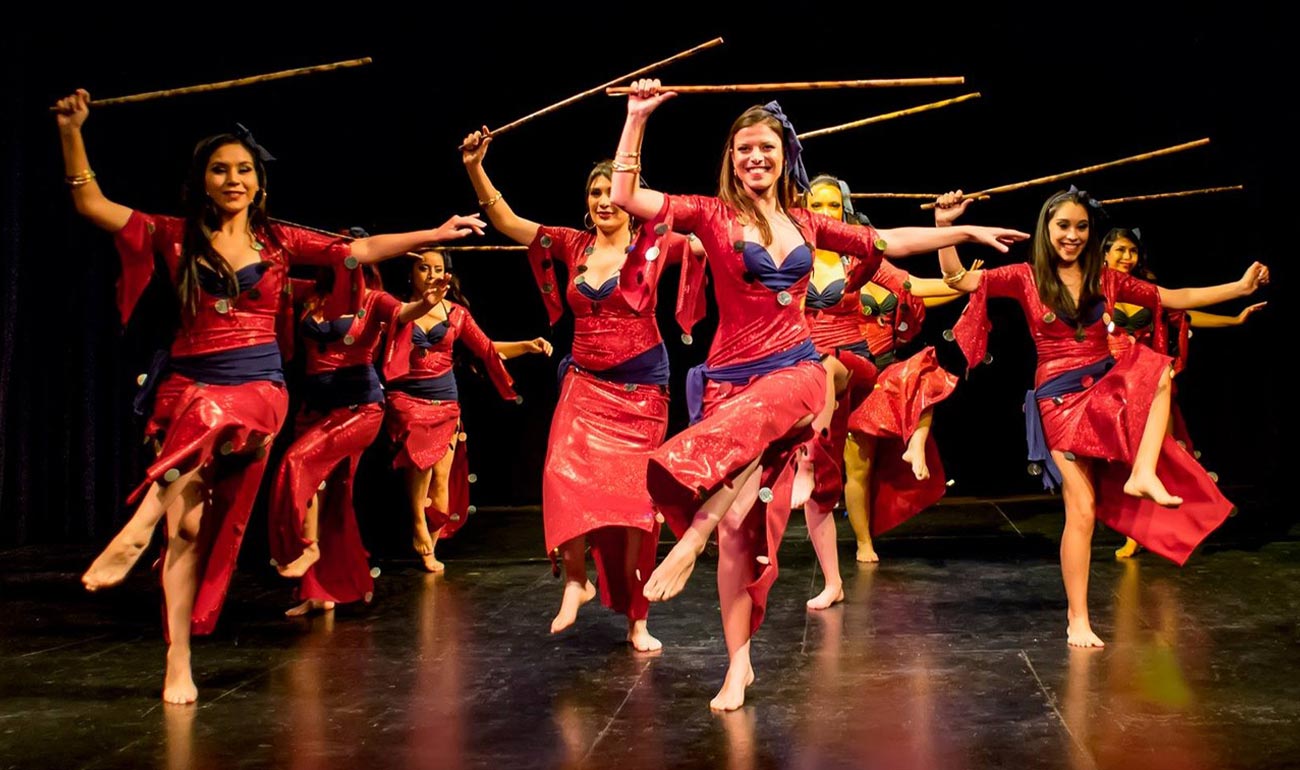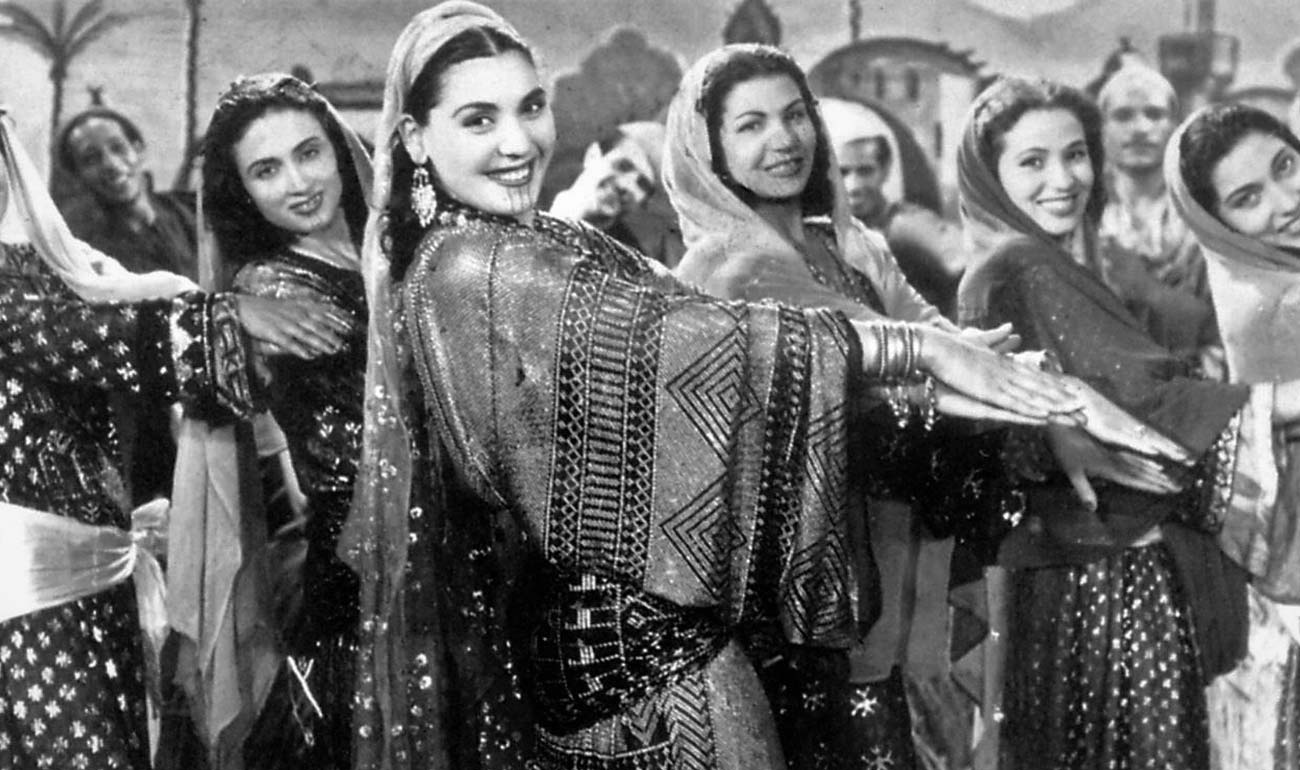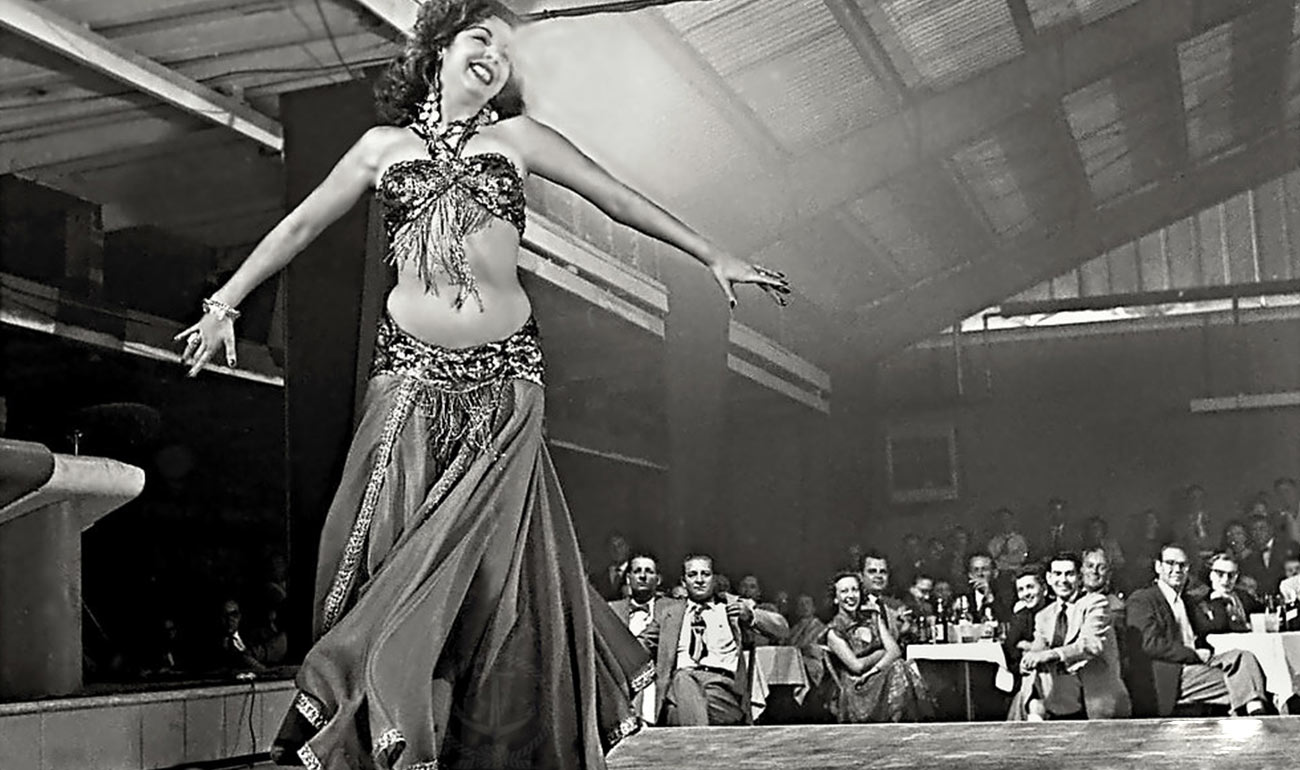
Samia Gamal, “The Barefoot Dancer”
Samia Gamal is considered to be one of the greatest dancers of the Golden Age of Belly dance. She was a unique artist, who influenced the generations of her time, both in the East and in the West. She brought the Raqs Sharqi from Egypt to Hollywood and from there to the schools of Europe.
Samia, whose real name was Zaynab Ibrahim Mahfuz, was born in Wana, in 1924. At an early age he moved to Cairo, near the famous Bazaar Khan el-Khalili. At only 8 years of age she remains an orphan of a mother, and at 14 she leaves her paternal home to move to her older sister.
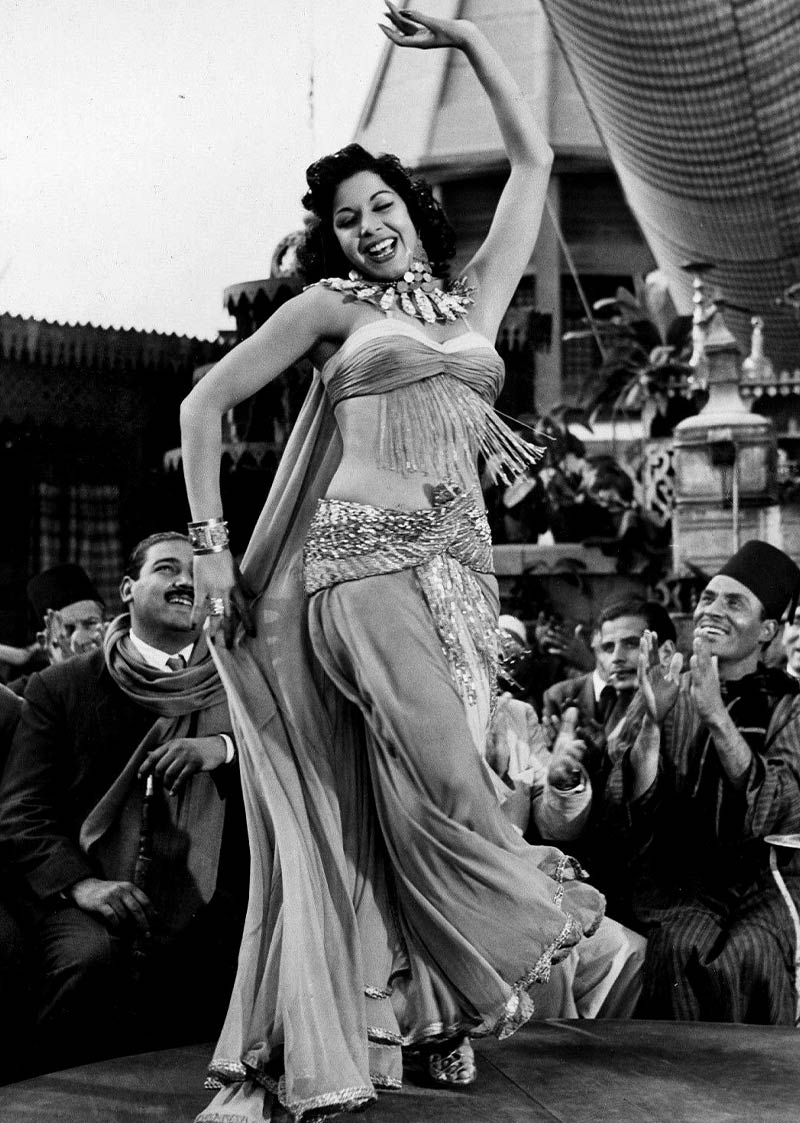
Samia Gamal during a performance
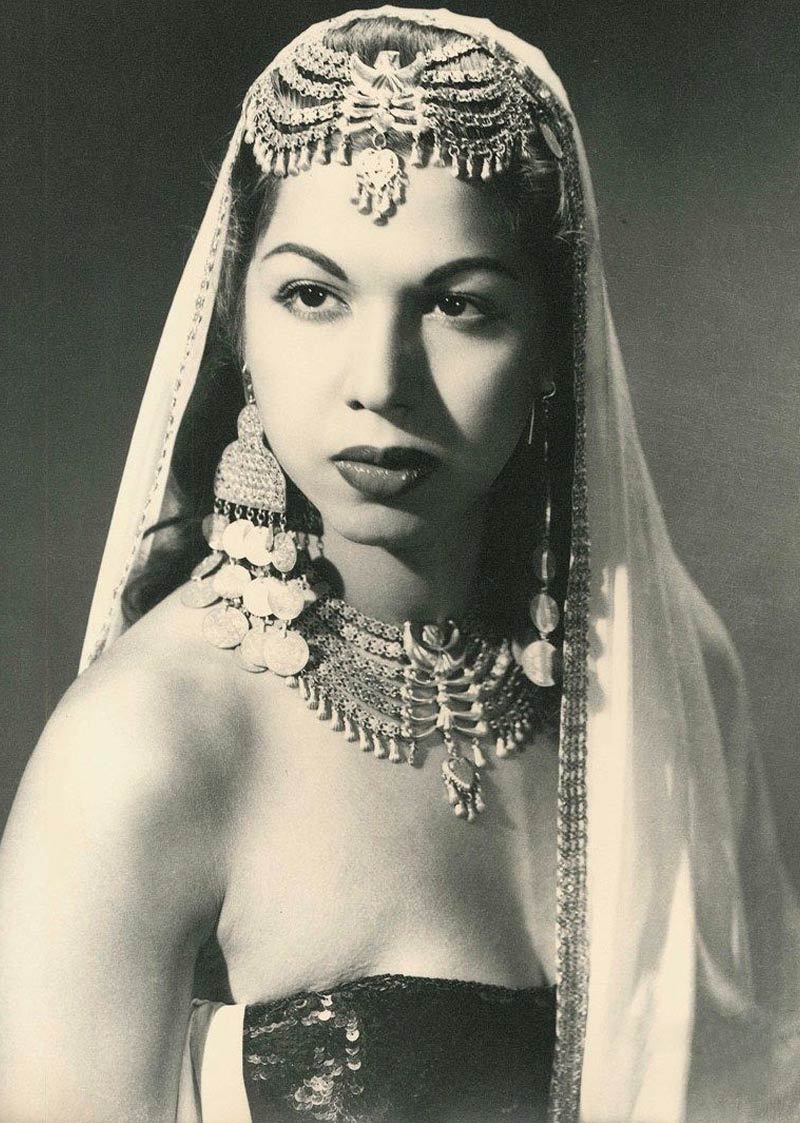
Samia Gamal portrait
THE BAREFOOT DANCER
Fate has it that Zaynab is presented to the great Badia Masabni, the matron of oriental dance on stage. In search of young talents, Badia hires her into his troop, giving her the stage name, Samia Gamal.
On the stage, Samia forgets the choreography in her first solo debut, the audience starts to whistle her and she runs away; forced by the choreographer to return to the scene, Samia panicked takes off her shoes and begins to dance improvising. The public acclaims her and from that moment on, she becomes “the barefoot dancer“. Dance as a soloist once a week and it’s the beginning of a great career.
She began to study dance with Badia herself, and with a classical and modern dance teacher, sharing the training and the stage with the other great star of that moment, Tahiya Carioca, colleague on stage at the Cabaret of Madame Badia. Training allows her to quickly systematize her innate choreutic skills. The attachment to the Badia venue and Samia’s gratitude to his inspiring muse meant that Samia did not perform in other venues in Egypt, but only in the Cabaret of Badia Masabni and in important private parties.
A fundamental encounter in Samia’s artistic and personal life is that with the singer and musician Farid el Atrache, who plays the Oud in the orchestra of the same venue. It’s a troubled love at first sight. Farid is a successful musician but he does not want or cannot marry Samia because coming from a Lebanese Druze family, by tradition he can marry only a Druze woman, and certainly not a dancer. The relationship continues and Samia motivates him to throw himself headlong into cinema: Farid composes music for her, who also becomes the protagonist of his films, obtaining enormous success in the Arab world.
In 1949 King Faruk proclaimed Samia the dancer national representative of Egypt.
After 5 films, the couple split up, and Samia, persecuted by the press, moved abroad in 1950, where she continued to be successful as an artist.
Shop some item inspired by Artemisia
She performs in New York, in the famous The Latin Quarter nightclub and throughout Europe, bringing for the first time oriental dance abroad in a professionally valid form. She makes several films including “Ali Baba and the forty thieves” with Fernandel and “The valley of the kings” with Robert Taylor.
She marries the rich Texan Sheppard King III, who for her converts to the Islamic religion and convinces her to move to America. Thanks to this, Samia fully enters the American jet set, but the marriage does not last long.
The American experience marks his vision of dance, which becomes more theatrical, and Samia lays the foundations of the form of oriental dance that we know today, and which in fact uses forms and dynamics evidently taken from classical ballet.
After the divorce, Samia returns to Cairo, where she resumes working with Farid el Atrache.
In 1958 she married the Egyptian actor Rushdi Abaza, with whom he played several films. Rushdi had been Tahiya Karyoka’s husband. From this union, which will last seventeen years, a daughter is born, Quismet. In 1972 he retired from the scenes, to return to perform in the early 80s, he returned to the scenes for a year or two with Samir Sabri.
Until his death in 1994, she made a very withdrawn life. All invitations from Europe and America to teach are categorically rejected: she felt she was an artist and interpreter, not a teacher. Her legacy is the 84 films in which she stars.
THE STYLE
Samia Gamal was the first dancer with a complete choreutic preparation, and with a theatrical vision of the choreography. She has contributed significantly to the formation of what oriental dance is today, raising it to a professional level and improving its social image. The dancers to follow copied the style, and it now seems normal that there are arabesques and quick turns in oriental dance, as in classical ballet, but before this pioneer experimented them in her dance nobody had ever introduced them.
Samia created a very personal style, incorporating the technique of classical dance and above all, a very particular thing, of Latin American dance, in oriental dance, a very characteristic trait of her. Thanks to his very complete physical training, Samia had a perfect coordination and precision ability on her movements, maintaining grace and elegance even during the moments of greatest focus.
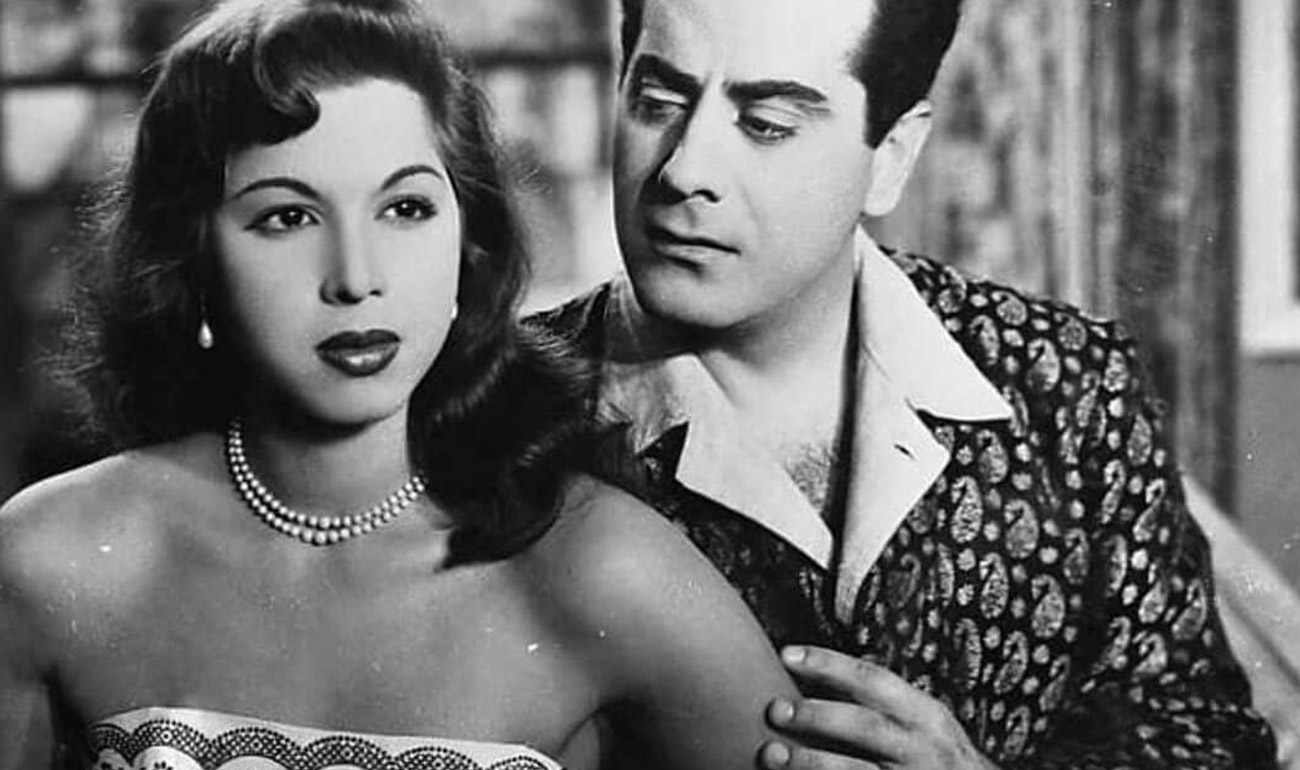
Typical of his style is the very particular use of intricate and elegant arm movements and the introduction of the veil in dance. It is said that her ballet teacher gave her a piece of cloth to hold in her hand during the dance to make her learn to use her arms in a more fluid way and Samia found the thing so interesting that she decided to incorporate it into her performances. Samia used the veil with incredible grace, and is an example of excellence in the use of this accessory, which the public liked a lot, and therefore Samia continued to use it. The veil gave her more confidence, and helped her to become familiar with the fluid movements of the arms, and therefore she decided to use it often during the introduction of her performance: now entering with a veil in her hand has become a classic of oriental dance, and the story owes this creation to Samia Gamal. His way of using the veil gave the impression that it was an extension of his body, not an external accessory that was thrown here and there to fill the space with scenic acrobatics.
A little curiosity: in the French film “Alì Babà and the 40 thieves” Samia wears a jewel to cover her navel: no dancer before her had done so.

